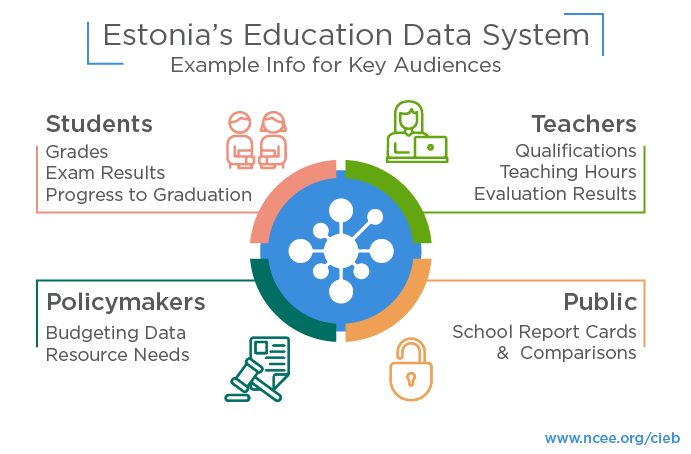
Collecting useful education data and making it available in formats that various stakeholders can access and use is a key challenge across the globe and here in the United States. As one of the most digitized nations in the world, Estonia’s education data system provides a model that others can learn from.
Since 2005, the Ministry of Education and Research has maintained the Estonian Education Information System (EHIS), an online database that contains school, student, teacher, and system-level data on all levels of the education system (from kindergarten through university and adult education). Each student and teacher is registered with an individual identification number. Students can log in to see their grades, exam results, and progress toward graduation requirements. Teachers can see their qualifications, teaching hours, and evaluation results. Policymakers can use the data to make budgeting decisions and identify resource needs. The public can access EHIS data through an online platform known as Educational Eye to access school report cards to see how schools compare on a range of measures.
One of the biggest strengths of EHIS is the accuracy of the data. By law, all schools are required to enter the data and keep it up to date. Schools only receive funding if the data are complete, with no duplications of students or teachers at multiple school sites. The EHIS is linked to more than 20 other state-run information systems and specific data can be accessed by authorized private service providers as well. For example, transportation agencies can verify a rider’s status as a student, or a bank can verify a student’s eligibility for a study allowance.
Learn more about Estonia’s education system in CIEB’s country profile.




